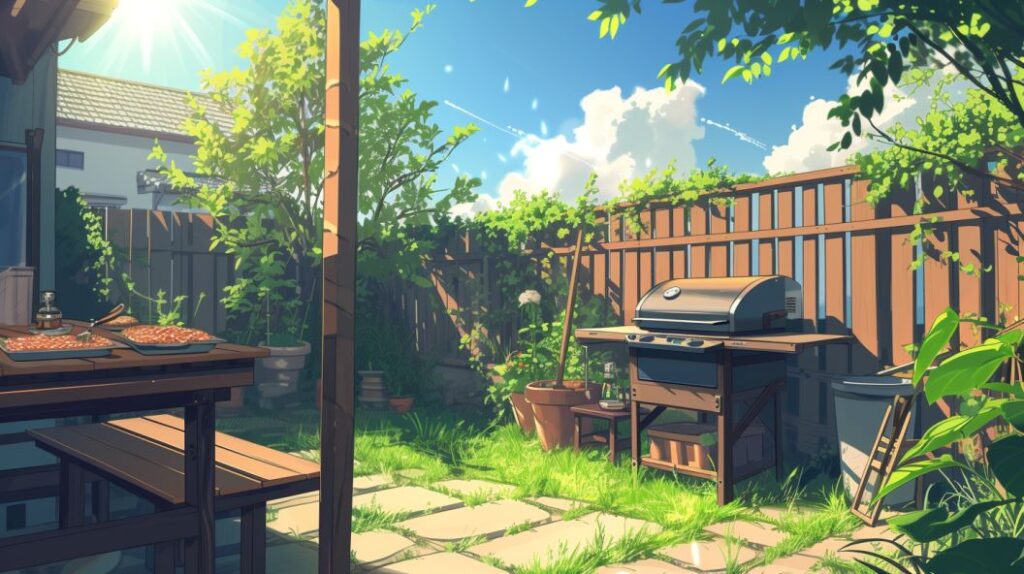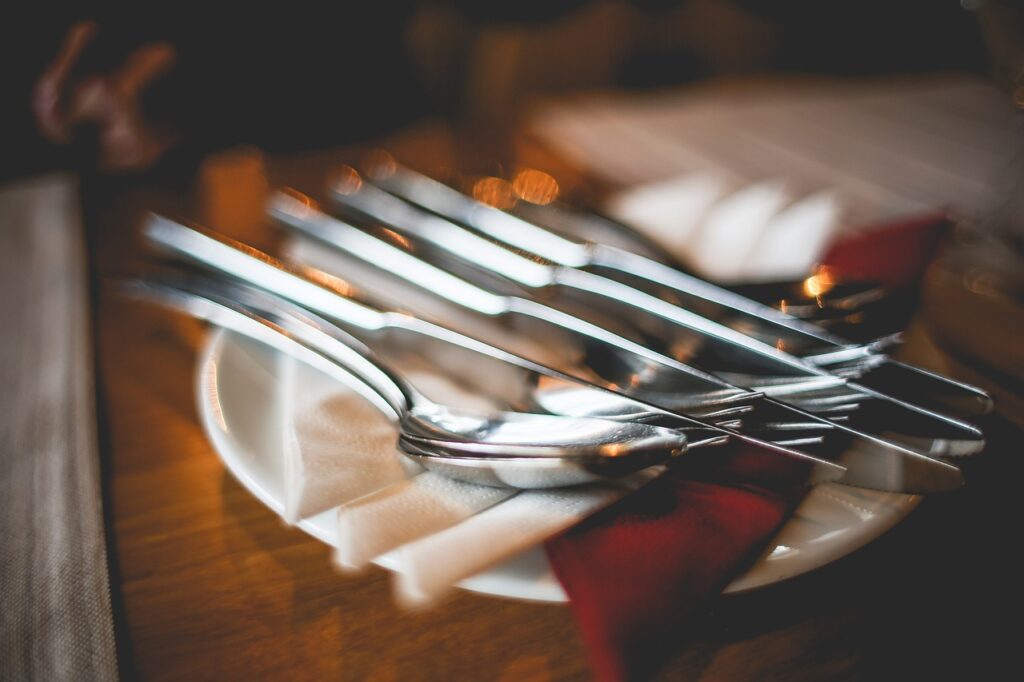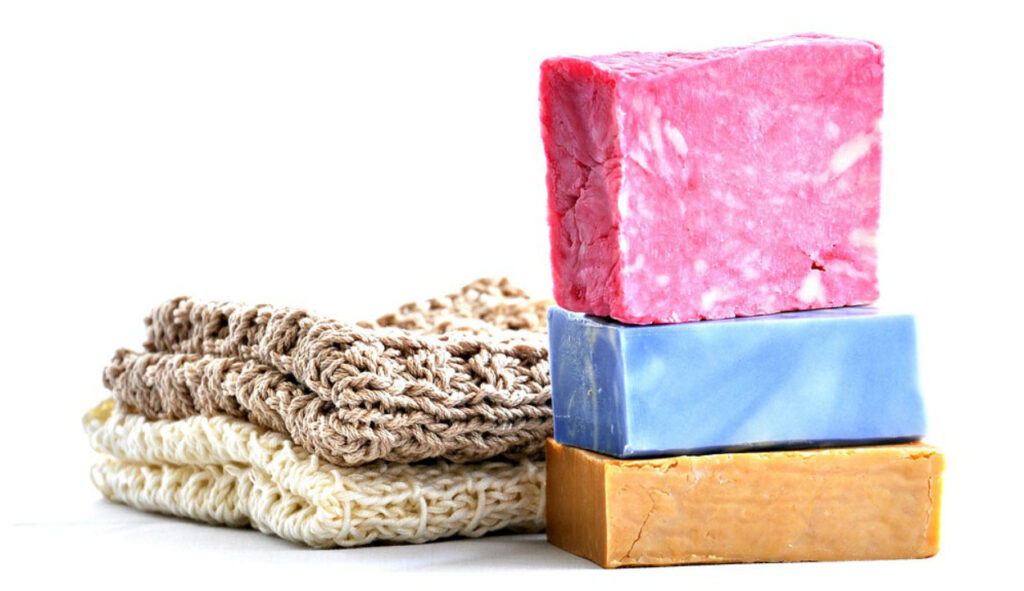How to Clean a Blackstone Griddle in 7 Minutes
Unleash the full potential of your Blackstone griddle with masterful maintenance that promises epic backyard feasts for years to come. It’s not just about keeping it clean; it’s about crafting outdoor cooking traditions or perhaps even a legacy of fun memories with family and friends.
- Before You Begin Cleaning
- Initial Cleaning for New Griddles
- Seasoning Your Blackstone Griddle
- 7-Minute Routine Cleaning After Cooking
- Deep Cleaning Process
- 3 Easy Steps for Removing and Preventing Rust
- Storing Your Blackstone Griddle
- How to Clean a Blackstone Griddle: FAQs
- What is the best method to remove rust from a Blackstone griddle?
- Can I use dish soap like Dawn to maintain my Blackstone griddle?
- What are the essential first-time cleaning steps for a new Blackstone griddle?
- Which accessories are recommended for effectively cleaning a Blackstone griddle?
- How should I clean my Blackstone griddle after each use?
- Is vinegar a suitable cleaning agent for a Blackstone griddle?
- Why is my Blackstone Griddle rusting?
Our family loves outdoor cooking. Our kids will remember all of the fun family times and tastes from preparing some pretty darn amazing food over the years, then continue those traditions with their families.
Discover how you can transform your griddle into a culinary powerhouse where every meal sizzles to perfection every time without continually battling with cooked-on residue. Starting with a clean cooking surface makes griddle cooking so much easier.
Key Points to Savor:
- Quick Clean Mastery: We’ll visit some quick hacks to banish grease and grime post-cooking.
- Deep Cleaning: Deep cleaning needs to happen periodically. But it’s a simple process we’ll dive deeper into below.
- Effective Seasoning: A properly seasoned surface is critical. The better job you do at seasoning, the more non-stick your cooking surface will be. Plus, it prevents rust and increases overall longevity, similar to the importance of seasoning cast-iron skillets, though Blackston uses cold-rolled steel instead of cast iron. Still, the seasoning process is similar.
By elevating your griddle game, you ensure each dish is a safe, flavor-packed masterpiece. A well-kept Blackstone isn’t just a griddle; it’s the heart of your outdoor kitchen, ready to fuel your passion for open-air culinary adventures.
Before You Begin Cleaning
Having the right materials at hand and understanding safety precautions are critical first steps.
Gather Materials
Before starting the cleaning process, it’s essential to assemble all the necessary items. You’ll need:
- Hot, soapy water: To effectively remove grease and food particles.
- Bucket: To hold the soapy water.
- Non-metallic scrubber or a lint-free cloth: For gently scrubbing your new Blackstone griddle.
- Heat-resistant gloves: To protect your hands from heat and cleaning agents.
- Metal scraper: If your griddle has residue from cooking, this will help remove it.
Safety Measures
Taking the right safety measures will prevent accidents and ensure a positive experience.
- Turn off and cool down: Always ensure your griddle is completely turned off and cooled down before you attempt to clean it.
- Wear heat-resistant gloves: Protect your hands from potential heat and avoid direct contact with cleaning agents.
- Only use abrasive materials when needed: To protect the integrity of your griddle top, do not use steel wool or other harsh scrubbers for common cleaning. You should only use those to remove rust or burnt-on food.
Initial Cleaning for New Griddles
When you first get your new Blackstone griddle, it’s essential to clean it before the initial use.
To clean your griddle top for the first time, simply use a weak solution of hot water and soap, wipe down the cooking surface, and then rinse thoroughly. You will only ever use soap for this initial cleaning.
This will remove any residues from the manufacturing process and prepare the surface for seasoning, which is crucial for creating a non-stick coating and protecting the griddle from rust.
Seasoning Your Blackstone Griddle
We’ll break down the seasoning process in the section belowbelow, but also check out this video from Blackstone for more info:
5-Step Griddle Seasoning Process:
1. Rinse With Water:
- Simply use warm water to rinse the surface of your griddle.
- Ensure you rinse off all soap before moving on to the steps below.
2. Dry the Surface:
- After rinsing, immediately dry the griddle surface with a lint-free cloth or paper towels.
- Ensure it’s completely dry to prevent rusting.
3. Apply Oil for Seasoning:
- Choose an oil with a high smoke point, like canola or vegetable oil, for the initial seasoning.
- Apply a thin, even layer across the entire surface, including the sides and back. Wipe off any excess oil so that only a thin layer of oil remains.
4. Heat It Up:
- Set the griddle to a high temperature.
- Once the oil starts to smoke, let it burn off until it stops, indicating that the seasoning is bonding to the griddle.
5. Repeat Seasoning:
- Let the griddle cool, and then repeat the oiling and heating process a few more times. Preferably 2-3 times.
- Multiple layers of oil enhance the griddle’s natural non-stick qualities.
- Future cooking sessions will act as additional seasoning, so you shouldn’t need to complete the above process again. Once in a while, be sure to coat the entire surface with a thin layer of oil, especially if you don’t typically use the entire cooking surface.
By following these steps, your new Blackstone griddle will be well-seasoned and all set for some serious cooking.
7-Minute Routine Cleaning After Cooking
Proper maintenance of your Blackstone griddle after each use ensures longevity and ready-to-go performance for your next cookout. The key steps are straightforward: remove leftover bits, clear away any grime or excess oil, and safeguard the surface from rust.
Scrape Off Food Residue
Immediately after cooking, while the griddle is still warm, use a metal scraper to gently remove any food particles or debris. This will prevent food from hardening on the surface, which can create irregularities and affect your next cooking session.
Stuck-on food will accumulate if you don’t regularly perform this step, making food more likely to stick. Also, there’s no need to use excess pressure when scraping.
Excess pressure could damage the seasoning layers of the cooking surface. If that happens, just re-season again, following the steps in the previous section.
Wipe and Rinse the Surface
Once the residue is scraped off, dampen a few paper towels in hot water and wipe the griddle surface to remove excess oil or dirty grime and food bits. If needed, you can also use a non-metallic scrubber to address any stubborn spots without scratching the surface.
Dry and Oil Lightly
After cleaning, dry the surface thoroughly with clean paper towels to prevent rust. Then, apply a thin layer of cooking oil; this acts as a protective barrier, keeps the surface non-stick, and extends the life of your griddle. Use a paper towel to evenly distribute the oil across the entire surface.
If you use your Blackstone griddle multiple times per week, there’s no need to wipe down the surface each time. Instead, do this after a few cooking sessions, perhaps once every two weeks.
Deep Cleaning Process
Performing a deep clean of your Blackstone griddle ensures the longevity of the cooking surface and maintains its non-stick properties. Perhaps the biggest thing to remember is that there’s no reason to overthink it; cleaning your griddle is super straightforward.
Apply Water (no soap)
For a successful deep clean, start by heating the Blackstone griddle to help loosen any remnants. Once warm, turn off the heat. Then, create pour some water on the griddle surface and use a scraper or scouring pad to loosen all food residue.
Once all residue and food particles are free, go over the entire surface with dry paper towels to remove all loosened dirt from the previous step. Feel free to use an old rag, but keep in mind that it will get very greasy. Just rinse and repeat until the surface is clean.
Note: Blackstone does not recommend using soap to for regular cleaning on their griddles. If you use soap, you may taste soap residue in your food.
Rinse
Once the surface is free of food debris, it’s time to rinse. Use a clean microfiber towel soaked in plain hot water and give everything a final wipe-down. You do not need to remove all grease from the surface; the goal is just to get it completely smooth.
Apply Cooking Oil
After the above steps, dry the griddle completely. You can even heat it up a bit to ensure all the water evaporates from the cleaning process. Then, wipe down the entire cooking surface, including the sides, with a thin layer of cooking oil.
3 Easy Steps for Removing and Preventing Rust
Rust is a huge problem with griddles and grills. However, if you regularly use your griddle, clean it, and apply oil to the cooking surface, you shouldn’t have any issues with rust on the flattop.
However, if your griddle is left unused for long periods of time, there’s a far greater chance of rust, and it’s even more important to ensure you regularly wipe down the cooking surface with oil.
1.) Identify Rusty Areas
First, inspect your griddle for any rusty areas. It’s important to spot these early on, as rust can spread if not addressed promptly.
Common signs are discoloration and a rough texture on what was once a smooth surface. Identifying these areas will help you focus your rust-removal efforts.
2.) Remove Rust with Vinegar or a Grill Stone
For the removal process, start with a gentle solution like distilled white vinegar—apply it to the rusted areas and let it sit for a few minutes to break down the rust. Alternatively, using a grill stone is an effective method to scrub away rust.
- Vinegar Method:
- Apply vinegar directly to rust.
- Allow to sit for 5-10 minutes.
- Scrub rusted areas with steel wool until completely smooth.
- Grill Stone Method:
- Apply oil to all rusted areas.
- Gently scrub the area with the grill stone.
- Progress in a circular motion until all rust is removed.
- Do a final wipe-down, removing all rust residue.
Ensure all rusty residue is completely removed before proceeding to the next step.
3.) Re-Season the Griddle
Once your griddle is rust-free, it’s crucial to re-season the griddle to protect it from future rust. Seasoning creates a non-stick surface and shields the metal rust-prone surface from moisture—one of the primary catalysts for rust.
- Apply a very thin layer of cooking oil (flax, olive, or canola is fine) to the entire cooking surface.
- Turn the heat to high and let all the oil burn off.
- Once there’s no additional smoke, turn off the griddle and let it cool.
Repeat the oiling and heating process several times to build up a solid layer of seasoning, two to three times minimum.
Remember to always dry your griddle thoroughly after cleaning and to apply a light coat of oil before storage to prevent rust from forming.
Storing Your Blackstone Griddle
One of the best ways to prevent rust is to store your griddle in a dry location with a cover.
Location: Choose a dry, sheltered location to store your griddle. If you must store it outside, ensure it is under a covered area to protect it from the elements.
Cover: Always use a cover specifically designed for your griddle. A good cover not only shields the griddle from dust and debris but also minimizes exposure to moisture.
| Storage Tips | Details |
|---|---|
| Store in a Dry Place | Moisture is the enemy of your griddle; keep it bone-dry. |
| Use a Griddle Cover or Tarp | Protect it from the elements when not in use. |
| Hang Accessories | Keep spatulas and scrapers off the ground and dry. |
Remember, when not in use for extended periods, periodically check on your griddle to make sure the cover is secure and that no moisture has collected inside.
If possible, consider storing your griddle indoors during extreme weather conditions to avoid unnecessary wear.
Your Blackstone Griddle is a valuable investment, and with these steps, you’ll ensure it remains in prime condition for your next cooking adventure.
How to Clean a Blackstone Griddle: FAQs
What is the best method to remove rust from a Blackstone griddle?
Don’t fret if you see rust; it’s easy to remove with a few easy steps. Apply oil to the rusted areas on the flattop cooking surface, then simply use steel wool or a grill stone to buff out the rust lightly. You can use vinegar as well, as detailed in the above post.
We usually like to also lightly buff the areas around the rust, out 2-3 inches on all sides to be extra thorough.
After that, wipe the entire area down again with some oil, then season your griddle by turning it on the high setting until the oil smokes off completely. Once the griddle cools, reapply a thin layer of oil, then turn the griddle on high again. Do this 2-3 times minimum to ensure it’s well-seasoned.
Can I use dish soap like Dawn to maintain my Blackstone griddle?
It’s generally recommended to avoid soap-based cleaners to maintain the seasoned surface of your Blackstone griddle. Routine cleaning usually only requires hot water and a scraper or stone.
If you use soap, you also may end up tasting it in your food, even if you’ve rinsed it off really well. There is simply no reason to use soap on a seasoned griddle, and we’d advise against it.
The only time you should use soap to clean the cooking area is when you’ve first removed it from the packaging. After that, food, water, oil, or vinegar should be the only things that end up on your cooking surface.
What are the essential first-time cleaning steps for a new Blackstone griddle?
When cleaning a new Blackstone griddle for the first time, it is crucial to clean and season the griddle top to create a non-stick surface. This includes heating it to remove any factory residues, applying oil, and heating it until it smokes and darkens.
Which accessories are recommended for effectively cleaning a Blackstone griddle?
For effective cleaning, accessories such as a metal scraper, paper towels, heat-resistant gloves, and seasoning oil are recommended. Additionally, grill stones can be super handle, especially if you encounter issues with rust.
You may also consider a Blackstone cleaning kit for convenience.
How should I clean my Blackstone griddle after each use?
After each use, allow your Blackstone griddle to cool, then scrape off any remaining food particles. Wipe the surface clean with a cloth or paper towels and apply a thin layer of oil to protect the surface until its next use.
Is vinegar a suitable cleaning agent for a Blackstone griddle?
Yes, vinegar can be a suitable cleaning agent for your Blackstone griddle, especially for removing sticky residues or for a deeper clean without harsh chemicals. Always follow up with rinsing and oiling the surface.
Why is my Blackstone Griddle rusting?
Water plus metal and time equals rust. Your griddle is rusting because the metal cooktop surface was exposed to moisture for an extended period of time, causing oxidation.
Oftentimes, if you read forums or reviews on grills or griddles, you may see comments like “Poor quality, it rusted in less than a year.”, and so on. However, when it comes to the cooking surface, poor quality isn’t usually the reason for rust; oxidation is the reason.
Common reasons your griddle is rusting would be a lack of proper cooking seasoning on the cooking surface, improper maintenance between cooking, or inadequate storage.
As long as you season your Blackstone griddle well and ensure there’s always oil on the surface, it will not rust.


